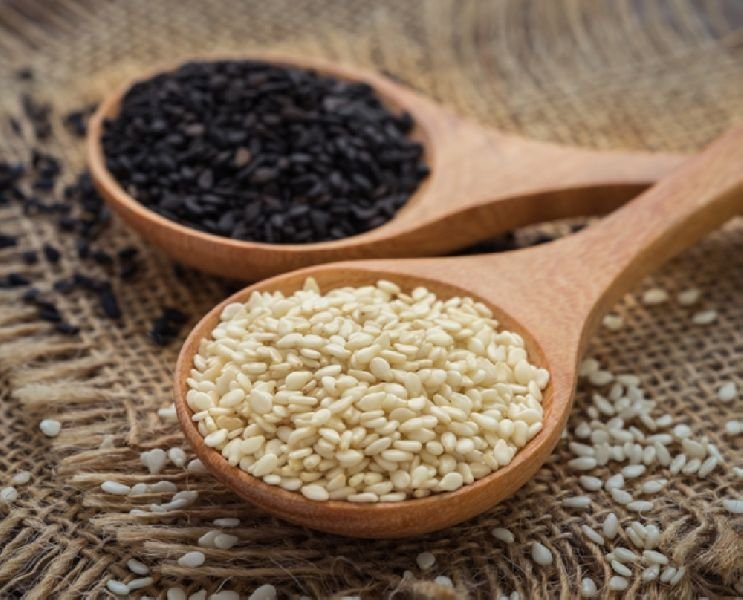Sesame is a flowering plant in the genus Sesamum, also called benne. Numerous wild relatives occur in Africa and a smaller number in India.
Botany
Sesame is an annual plant growing 50 to 100 cm (1.6 to 3.3 ft) tall, with opposite leaves 4 to 14 cm (1.6 to 5.5 in) long with an entire margin; they are broad lanceolate, to 5 cm (2 in) broad, at the base of the plant, narrowing to just 1 cm (0.4 in) broad on the flowering stem. The flowers are yellow, tubular, 3 to 5 cm (1.2 to 2.0 in) long, with a four-lobed mouth. The flowers may vary in colour, with some being white, blue, or purple.
Sesame seeds occur in many colours depending on the cultivar. The most traded variety of sesame is off-white coloured. Other common colours are buff, tan, gold, brown, reddish, gray, and black. The colour is the same for the hull and the fruit.
Sesame fruit is a capsule, normally pubescent, rectangular in section, and typically grooved with a short, triangular beak. The length of the fruit capsule varies from 2 to 8 cm, its width varies between 0.5 and 2 cm, and the number of loculi varies from four to 12. The fruit naturally splits open (dehisces) to release the seeds by splitting along the septa from top to bottom or by means of two apical pores, depending on the varietal cultivar. The degree of dehiscence is of importance in breeding for mechanised harvesting, as is the insertion height of the first capsule .
Sesame seeds are small. Their size, form, and colours vary with the thousands of varieties now known. Typically, the seeds are about 3 to 4 mm long by 2 mm wide and 1 mm thick. The seeds are ovate, slightly flattened, and somewhat thinner at the eye of the seed (hilum) than at the opposite end. The weight of the seeds is between 20 and 40 mg.[8] The seed coat (testa) may be smooth or ribbed.
Suggested use:
Sesame seeds be grinded into sesame paste, which can be used to eat and make pastry; it also be popular used as seasoning to Chinese hot pot.
Storage: Avoid direct sunlight, and stored in a cool and dry place
Contact Us For Quotation:

